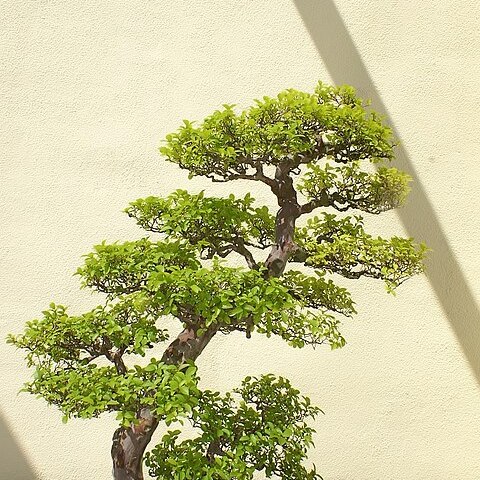Shrubs scandent or erect, to 3 m tall, armed. Branchlets slender, alternate or subopposite, brownish, terminating in a spine, finely tomentose when young. Leaves opposite at basal nodes to alternate; petiole 2-7 mm, puberulent; leaf blade abaxially pale green, adaxially green, usually elliptic, oblong, or ovate-elliptic, rarely ovate or nearly orbicular, 2-4.5 × 0.7-2.5 cm, papery, abaxially glabrous or pubescent on veins, sometimes tomentose and glabrescent, adaxially glabrous, lateral veins 3-5(-7) pairs, conspicuously prominent abaxially, base rounded or subcordate, margin serrulate, apex acute, obtuse, or rounded. Flowers yellow, sessile, fragrant, usually 2-to few fascicled in terminal or axillary lax spikes or paniculate spikes; rachis 2-5 cm, sparsely puberulent. Calyx tube sparsely pubescent, shallowly cup-shaped; sepals triangular, ca. 1 mm. Petals spatulate, shorter than sepals, apex 2-fid, often reflexed. Disk fleshy, glabrous, distinctly thickened around ovary. Ovary 3-loculed, with 1 ovule per locule; style very short; stigma 3-fid. Drupe black or purple-black at maturity, subglobose to obovoid, ca. 5 mm in diam., with 1-3 pyrenes; mesocarp fleshy, sour-tasting. Seeds flat, emarginate at both ends. Fl. Jul-Sep, fr. Mar-May of following year.
More
Shrubs or vines, loosely to compactly branched. Branches usually erect, sometimes sprawling or clambering, closely and thinly brown-tomentose. Leaves persistent, opposite to subopposite proximally, becoming alternate distally; blade oblong to elliptic, ovate, or elliptic-ovate [suborbiculate], 1–4.5 × 0.5–2.5 cm, base rounded to subcordate, margins serrulate, apex acute to obtuse or rounded, surfaces glabrous [densely white-tomentose abaxially]; veins prominently raised adaxially, reticulate. Inflorescences terminal and axillary, primary axis 2–5 cm, lateral branches 4–8. Drupes black to purple-black or dark brown, ovoid or obovoid to subglobose, 4–5 mm; stones 3.
An evergreen shrub. The branches are stiff and slender and can end in a thorn. The leaves are narrowly oval and can be rough. There are small teeth around the edge. They are 1-4 cm long by 1-2 cm wide. The flowers are in interrupted groups along a stalk. The flowers are 3 mm across. The fruit is 4-5 mm long. It is black or dark brown. They have 3 lobes. Usually there are 3 seeds. There are some botanical varieties.

